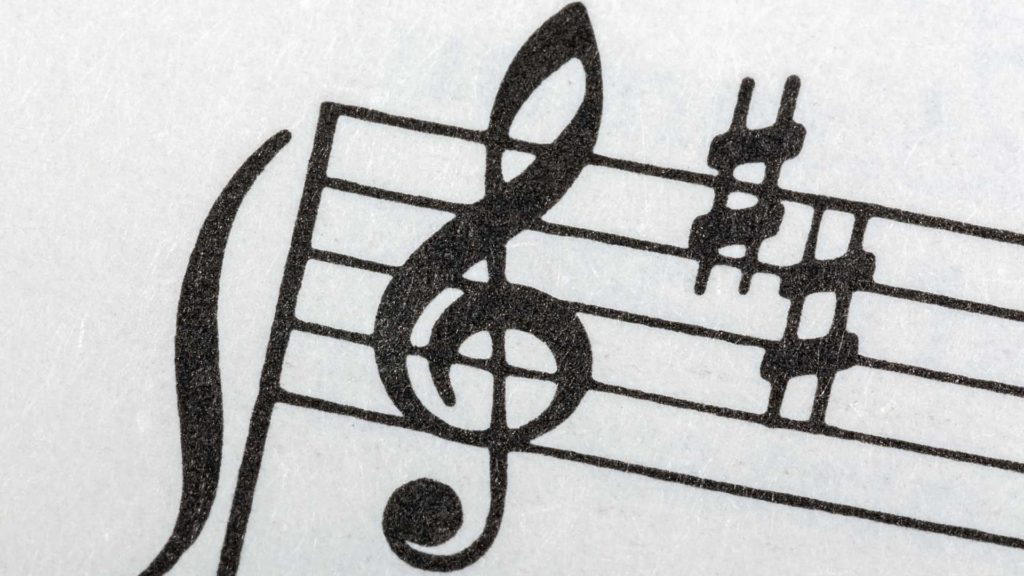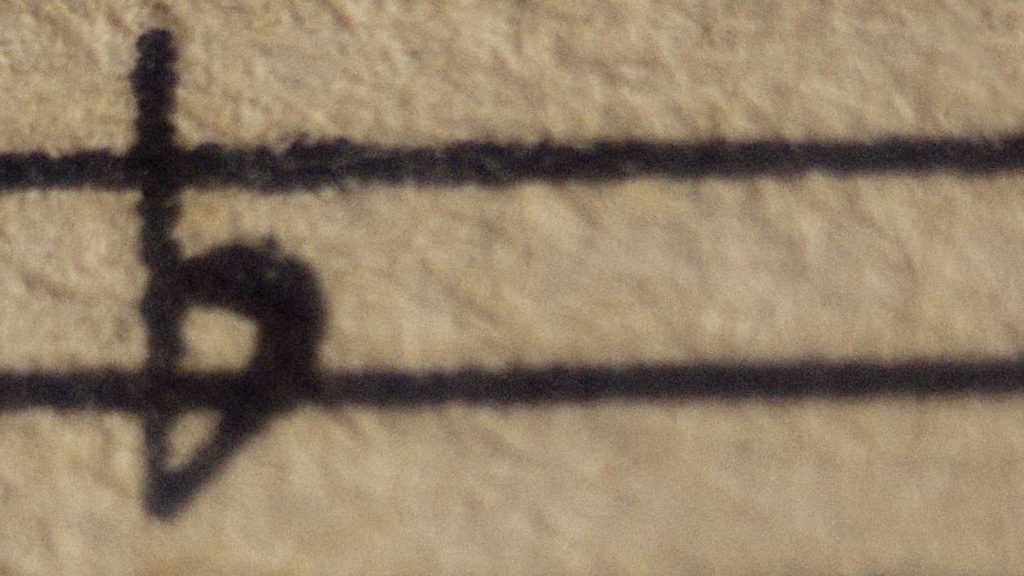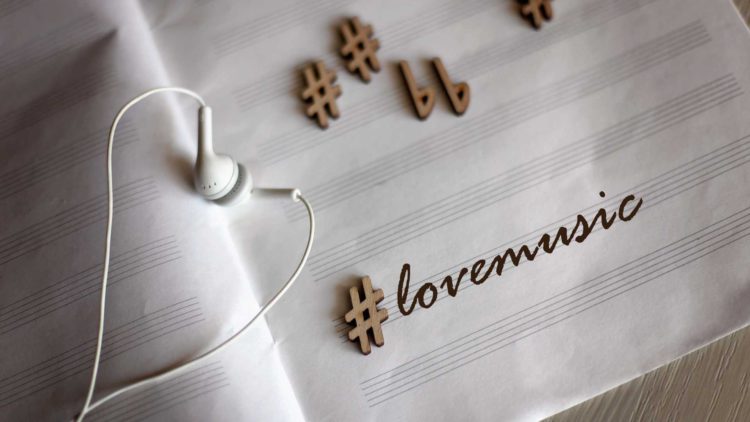Have you ever heard someone use the terms “sharp” and “flat” when referring to musical notes and wondered what they meant?
While overall quite simple in theory, this concept might come across as a bit complicated at first.
Sharp and flat notes are used in music of all genres and played on instruments of all kinds.
It’s likely you’re hearing them all the time without even realizing it!
The good news is that you don’t need to be a composer or even a musician to understand these basic musical terms. Read on to find out what the difference is between a sharp note and a flat note.
What’s the Difference between Sharp and Flat?
In musical notation, a sharp note is shown using the symbol # and represents one half-step higher in pitch than a natural note. Conversely, a flat note represents one half-step lower in pitch than a natural note and is represented by the symbol ♭.
These half-step changes in pitch (also called semitones) provide a subtle difference in sound (either slightly higher or slightly lower) than a natural note’s original frequency.
To better understand the difference between sharps and flats, we must first understand natural notes.
A natural note is one that is neither sharp (#) nor flat (♭) and appears on the lines and spaces of a musical staff. Natural notes are named using the letters A, B, C, D, E, F, and G.
One of the best ways to see this represented is on the keyboard of a piano, where natural notes are the white keys and sharp and flat notes are represented by the black keys.
Moving up in pitch means moving to the right on the piano keyboard. A half-step in this direction from a natural note would be a sharp, so playing the black key to the right of C would be C#.
Moving down in pitch means moving to the left on the piano keyboard, so a half-step down from a natural note would be a flat key. Playing the black key to the left of B would be B♭.
What Does a Natural Note Look Like?
When you look at a page of sheet music, natural notes are simply the music notes that appear on the musical staff. The sharp and flat symbols that accompany a natural note to change the way that it’s played can also be referred to as accidentals.
Accidentals last throughout the line of music but can be canceled by a natural symbol.
This symbol is shown as ♮ and it can be used to restore the note back to its original pitch after it has been played in a sharp or flat variation.

■ How Long Does a Sharp or Flat Last?
A sharp or flat symbol added onto a natural note will last for one measure of music. A measure (also referred to as a bar) is indicated by vertical lines on the musical staff and is used to break up a piece of music into smaller parts. A measure can vary in size, but whenever the measure ends, the sharp or flat will no longer be attached to each note.
If a composer wanted the sharp or flat accidentals to last longer than one measure of music, they would likely change the entire key of the piece of music, which would allow the sharps and flats to occur naturally rather than having to add them individually to each measure.

■ How Can You Tell a Flat from a Sharp?
A flat note will sound slightly lower in pitch than you may be used to hearing. When a person’s singing voice sounds a bit “off”, it’s quite common that they are singing a bit flat. A sharp note, on the other hand, will sound slightly higher-pitched than it’s meant to and can often come across as more noticeable, loud, or bold than its natural or flat counterparts.
By using a tuning fork, you can hear a perfect A note, which will allow you to experience exactly what that natural note sounds like when it is neither sharp nor flat.
This perfect note is used by musicians to adjust their instruments so that they are in tune.
If you’re curious to hear what a sharp A note sounds like, simply adjust your instrument a half-tone up from the natural note after tuning it.
By tuning the instrument a half-note down from the natural A note, you will hear what a flat A note sounds like.
Why Are Sharps Harder than Flats?
Depending on the instrument you play and your personal experience, you may find that it’s hard to play in a sharp key than in a flat key. While each instrument has certain keys that are naturally easier and more difficult to play in, your own experience will also play a role in what you consider challenging.
If you started out by learning and playing songs that are written mostly in a flat key or contain a lot of flat notes, then it may seem more difficult to switch to a song that contains a lot of sharp notes.
Practice and gaining familiarity with playing in a certain key is what will allow you to feel more comfortable with both sharps and flats.
What Does It Mean When You Sound Flat?
Has anyone ever told you that you sound flat when you sing? What does that mean? You may have a beautiful voice, but listeners tend to pick up on any “flatness” quite easily because it stands out and takes away from your overall voice and performance.
While sounding “sharp” means that your pitch is slightly higher than it should be, sounding “flat” is the opposite of that and means your notes are slightly lower in pitch than what would sound correct to the average listener.
■ Is It Better to Be Sharp or Flat?
If you’re going to be either a little on the sharp side or the flat side, it seems to be generally preferred that you be a bit sharp. This is especially true if you’re the lead or solo performer, as your sound will be more noticeable overall.
The main reason for this is that our ears tend to pick up on flat notes more easily than sharp notes. Flat notes stand out in music because they don’t tend to be used as commonly.
If you sound even slightly flat, your listeners are more likely to think you sound out of tune. If you sound a bit sharp, on the other hand, listeners will be much less likely to notice.
The other argument for this, however, is that it’s simply best to just practice more and play perfectly in tune!
■ Do Most People Sing Flat?
It’s interesting to know that the majority of people do, in fact, sing “flat”! This is most noticeable in singers who are just starting out, as they often need practice and training to avoid falling back into a flat pitch.
Since most of us naturally have a flatter tone to our voices that we’re trained to change and unlearn, it’s likely that modern music is actually an unnatural way of singing, but one that we’ve all gotten used to hearing throughout our lives.
Anything that doesn’t sound in tune with what we’re used to can seem out of place, and our ears are quick to notice it!
If you’ve just started out singing and people are telling you that you sound flat, don’t worry! It may just be the music itself that is out of key!
■ How Do I Stop Singing Flat?
Many vocalists encounter the problem of sounding “flat” when they sing. One of the main reasons for this might be that they haven’t taken the time to warm up their vocal cords prior to performing. Always make sure that you take the time to properly practice and feel comfortable with your singing voice before you begin.
Another reason might be that they’ve been singing too much! Try to rest your voice when possible, to avoid putting too much stress on your vocal cords, as this will ensure that you’re able to perform at your best.
If you don’t think you sound flat, but people are telling you that you do, then listening to a recording of yourself singing could allow you to hear yourself in a different way. This insight might allow you to change your pitch to become less flat.
If you’ve tried these tips and are consistently sounding flat, try consulting with a vocal coach who may be able to help you with specific voice exercises. Remember that practice makes perfect!
FAQs about Sharp and Flat Notes
A sharp note will have an accidental symbol of # attached to it, and a flat note will show the accidental symbol ♭. You may also look at the beginning of the staff to see if there are any # or ♭ accidentals shown there. This will let you know which key the music is intended to be played in.
The style of music being played can influence whether the listener prefers the sound in a sharp or flat key. It is quite common, however, to prefer songs in a sharp key, as they tend to sound happier and more upbeat.
■ Are A# and B♭ the Same Thing?
A# and B♭ are essentially the same note because they are played the same way and have the same sound. Where it becomes more involved is when you look at the context in which these notes are used, because that’s when they are referred to as specifically one or the other.
Determining which note is the correct one to use often depends on what key the piece of music is intended to be played in.
When starting out reading or playing music, it can be much easier to think in simple terms where these similar notes are actually one and the same.
■ Is B Flat Lower than C?
On the musical scale, B Flat (or B♭) is lower than the C note. Since we now know that a flat is a half step lower than a natural note, we can move backward a full note from C to B, and then a half-note from B to B♭.
Looking at a piano keyboard would allow us to see that there is one white key and one black key in between C and B♭ , which means that they are one and a half notes apart.
While there may not be much space between them, these notes can actually sound quite different!
■ What Is the One Sharp in the Key of G?
The key of G may also be referred to as G major. This is a scale based around the G note and contains the notes G, A, B, C, D, E, and F#. As you can see, F is the only note which contains a # symbol, and therefore it’s the only sharp that is used in this scale.
Because F is always sharp in the key of G, the sharp symbol will often be placed at the start of each staff rather than attached as an accidental to each individual F note.
This tends to be more convenient and gives the musician a good idea of how to play the piece right from the start.
A Last Note on Notes
The difference between a sharp and a flat note may sound subtle, but these symbols are an important way for a composer to convey a difference in pitch to a musician playing a piece of music. Now when you see a sharp (#) note, you’ll know that it’s a half-step higher in pitch, and that a flat note (♭) is a half-step lower!

